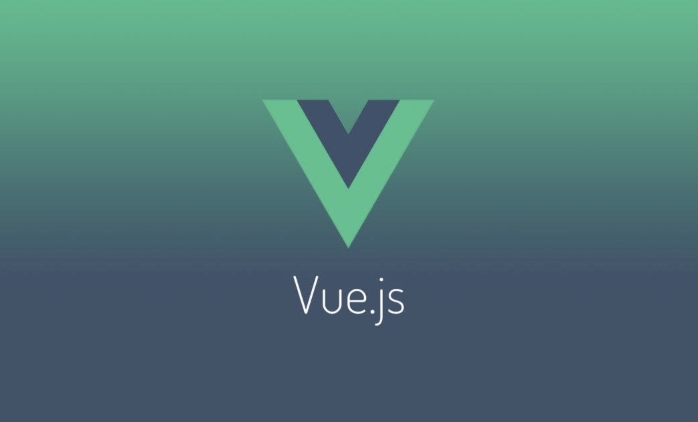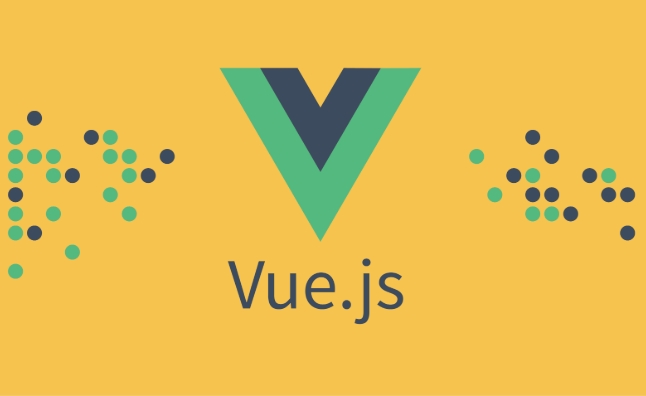How to integrate a third-party library like Chart.js in Vue?
Jul 19, 2025 am 01:38 AMHow to integrate Chart.js in Vue? First, install Chart.js and optional plug-ins, then create encapsulation components to receive chartData and chartOptions parameters, and finally reference the components in the page and pass data. The specific steps are: 1. Install Chart.js using npm or yarn; 2. Create the BarChart.vue component and render the chart in the mounted life cycle; 3. Introduce components and configure data and options in the page; 4. Pay attention to details such as responsive settings, instance destruction, and color management.

Of course, here is a practical guide on how to integrate Chart.js in Vue.

Basic ideas
Chart.js is a lightweight, powerful chart library that works well with Vue. The core steps include installing dependencies, creating encapsulated components, passing data, and rendering charts. As long as the structure is clear, the whole process is not complicated.
Install Chart.js and related dependencies
First you have to add Chart.js to the project. If you are using Vue 3 Vite or Webpack, you can install it directly through npm or yarn:

-
Using npm:
npm install chart.js
Using yarn:

yarn add chart.js
Some plug-ins (such as automatic screen size adaptation) may also require additional installation of chartjs-plugin-zoom or chartjs-plugin-datalabels , etc., and add them as needed.
Create a reusable Vue chart component
To facilitate future calls, it is recommended to encapsulate Chart.js into a Vue component. For example, create a new file called BarChart.vue :
<template>
<canvas ref="chartCanvas"></canvas>
</template>
<script>
import { Chart, registerables } from 'chart.js';
Chart.register(...registerables);
export default {
props: {
chartData: {
type: Object,
required: true
},
chartOptions: {
type: Object,
default: () => ({})
}
},
mounted() {
this.renderChart();
},
methods: {
renderChart() {
const ctx = this.$refs.chartCanvas.getContext('2d');
new Chart(ctx, {
type: 'bar',
data: this.chartData,
options: this.chartOptions
});
}
}
};
</script> This component receives two parameters: chartData and chartOptions , which are used to define data and style configurations respectively.
Note: You can change it to line charts, pie charts and other types as needed, just change
type.
Use encapsulated components in the page
After the encapsulation is completed, you can refer to it on any page:
<template>
<div>
<BarChart :chart-data="chartData" :chart-options="chartOptions" />
</div>
</template>
<script>
import BarChart from './components/BarChart.vue';
export default {
components: {
BarChart
},
data() {
return {
chartData: {
labels: ['January', 'February', 'March'],
datasets: [{
label: 'Sales',
backgroundColor: '#f87979',
data: [10, 20, 30]
}]
},
chartOptions: {
responsive: true,
maintainAspectRatio: false
}
};
}
};
</script> This will show a bar chart on the page. You can modify chartData at any time to update the chart content.
Some easily overlooked but important details
- Responsive problem : Chart.js may not automatically adapt to window changes by default. You can set
responsive: trueinchartOptions. - Destroy instance : If components are frequently switched or loaded repeatedly, remember to destroy the chart instance during the
beforeUnmountlife cycle to avoid memory leaks. - Multiple chart types are shared : If you want the same component to support multiple chart types, you can also pass
typeas a prop. - Color management : It is recommended to use Chart.js' color plug-in to unify the color matching style.
Basically that's it. After encapsulation once, you only need to pass data every time you use it, and it is not troublesome to maintain it.
The above is the detailed content of How to integrate a third-party library like Chart.js in Vue?. For more information, please follow other related articles on the PHP Chinese website!

Hot AI Tools

Undress AI Tool
Undress images for free

Undresser.AI Undress
AI-powered app for creating realistic nude photos

AI Clothes Remover
Online AI tool for removing clothes from photos.

Clothoff.io
AI clothes remover

Video Face Swap
Swap faces in any video effortlessly with our completely free AI face swap tool!

Hot Article

Hot Tools

Notepad++7.3.1
Easy-to-use and free code editor

SublimeText3 Chinese version
Chinese version, very easy to use

Zend Studio 13.0.1
Powerful PHP integrated development environment

Dreamweaver CS6
Visual web development tools

SublimeText3 Mac version
God-level code editing software (SublimeText3)

Hot Topics
 How Does Vue.js's Virtual DOM Efficiently Handle Updates?
Jun 19, 2025 am 12:19 AM
How Does Vue.js's Virtual DOM Efficiently Handle Updates?
Jun 19, 2025 am 12:19 AM
Vue.js efficiently handles updates through virtual DOM. The specific steps are as follows: 1) Generate a new virtual DOM tree when the component state changes; 2) compare with the old tree through the diffing algorithm to find the changed part; 3) Only update the changed DOM part. In practical applications, use v-if/v-show and key attributes to optimize performance, reduce unnecessary DOM operations, and improve user experience.
 What are the Key Benefits of Using a Virtual DOM in Vue.js?
Jun 19, 2025 am 01:02 AM
What are the Key Benefits of Using a Virtual DOM in Vue.js?
Jun 19, 2025 am 01:02 AM
TheVirtualDOMinVue.jsenhancesperformanceandsimplifiesdevelopment.1)ItboostsperformancebyminimizingdirectDOMmanipulation.2)Itefficientlyupdatesbyusingadiffingalgorithm.3)Itsimplifiesdevelopmentthroughabstraction.4)ItintegrateswithVue.js'sreactivitysys
 How to optimize performance in Vue applications?
Jun 24, 2025 pm 12:33 PM
How to optimize performance in Vue applications?
Jun 24, 2025 pm 12:33 PM
The key to optimizing Vue application performance is to start from four aspects: initial loading, responsive control, rendering efficiency and dependency management. 1. Use routes and components to lazy load, reduce the initial package volume through dynamic import; 2. Avoid unnecessary responsive data, and store static content with Object.freeze() or non-responsive variables; 3. Use v-once instructions, compute attribute cache and keep-alive components to reduce the overhead of repeated rendering; 4. Monitor the package volume, streamline third-party dependencies and split code blocks to improve loading speed. Together, these methods ensure smooth and scalable applications.
 What Are Some Best Practices for Working with Vue.js's Virtual DOM?
Jun 19, 2025 am 12:18 AM
What Are Some Best Practices for Working with Vue.js's Virtual DOM?
Jun 19, 2025 am 12:18 AM
ToleverageVue.js'sVirtualDOMeffectively,followthesebestpractices:1)Usev-onceforstaticcontenttominimizeunnecessaryre-renders.2)Employcomputedpropertiesandwatcherswiselytoderivevaluesefficiently.3)Useuniquekeyswithv-forinliststomanageupdatesefficiently
 What is end to end testing for Vue apps?
Jun 25, 2025 am 01:05 AM
What is end to end testing for Vue apps?
Jun 25, 2025 am 01:05 AM
End-to-end testing is used to verify whether the overall process of Vue application is working properly, involving real user behavior simulations. It covers interaction with applications such as clicking buttons, filling in forms; checking whether the data obtained by the API is displayed correctly; ensuring that operations trigger correct changes across components; common tools include Cypress, Playwright, and Selenium; when writing tests, you should use the data-cy attribute to select elements, avoid relying on easily volatile content, and reasonably mockAPI calls; it should be run after the unit test is passed, and integrated into the CI/CD pipeline, while paying attention to dealing with the instability caused by asynchronous operations.
 What is the Primary Purpose of Vue.js's Virtual DOM?
Jun 19, 2025 am 12:28 AM
What is the Primary Purpose of Vue.js's Virtual DOM?
Jun 19, 2025 am 12:28 AM
TheprimarypurposeofVue.js'sVirtualDOMistooptimizerenderingandimproveperformancebyminimizingdirectDOMmanipulation.Itcreatesanin-memoryrepresentationoftheDOM,comparesittoidentifychanges,andupdatesonlythenecessaryparts,enhancingefficiencyanduserinterfac
 How Does the Virtual DOM in Vue.js Compare to the Real DOM?
Jun 19, 2025 am 12:54 AM
How Does the Virtual DOM in Vue.js Compare to the Real DOM?
Jun 19, 2025 am 12:54 AM
TheVirtualDOMinVue.jsismoreefficientandeasiertoworkwiththantheRealDOM.1)Itbatchesupdatesforbetterperformance.2)ItabstractsDOMmanipulation,simplifyingdevelopment.3)ItintegrateswithVue'sreactivitysystemforautomaticupdates.
 VueJS Virtual DOM : How does it efficiently track and apply changes?
Jun 19, 2025 am 01:08 AM
VueJS Virtual DOM : How does it efficiently track and apply changes?
Jun 19, 2025 am 01:08 AM
VueJS'sVirtualDOMefficientlytracksandappliesUIchangesthroughdiffingandpatching.1)ItcreatesanewVirtualDOMtreeafterastatechange.2)Thediffingalgorithmcomparesthiswiththeoldtreetoidentifyminimalchanges.3)ThesechangesarethenappliedtotherealDOM,minimizingm







